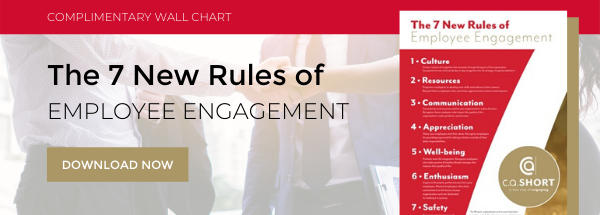How to Calculate Employee Engagement's Impact on Productivity


When it comes to identifying the benefits of employee engagement, there’s certainly no shortage of information. There are hundreds of studies, thousands of blogs, and millions of search results dedicated to the topic. You can easily discover how employee engagement decreases turnover, improves staff morale, and reduces safety incidents.
What you might struggle to find, however, is detailed information on how to measure your employees’ engagement impact on your firm’s overall productivity. We’re going to change that with today’s article!
Join us as we take a closer look at how small improvements in employee engagement can lead to big changes in productivity.
Measuring employee engagement's impact on productivity
To understand how changes in engagement affect productivity, we must first determine a baseline. This requires us to establish the current engagement and productivity levels of a “pretend” corporation, Sprockets Electric Company (SEC).
Let’s say that SEC has 500 employees who earn an average compensation of $50,000. Their employee engagement levels mirror the national average: 13% of their workforce is fully engaged, 20% are engaged, 55% are somewhat engaged, and 12% are disengaged.

Employee productivity also mirrors the national averages. See the table below for a summary of engagement level vs. performance delivered:
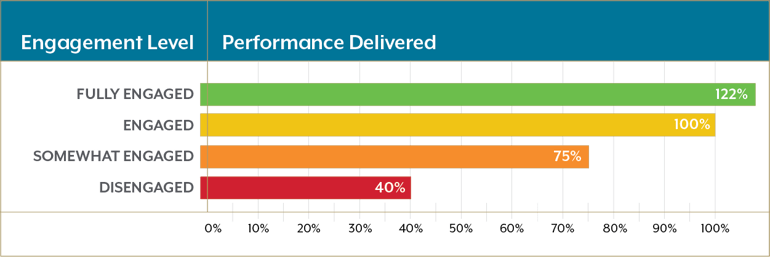
When we look at the big picture, current employee engagement levels are costing Sprockets Electric Company more than $4.5 million every year!
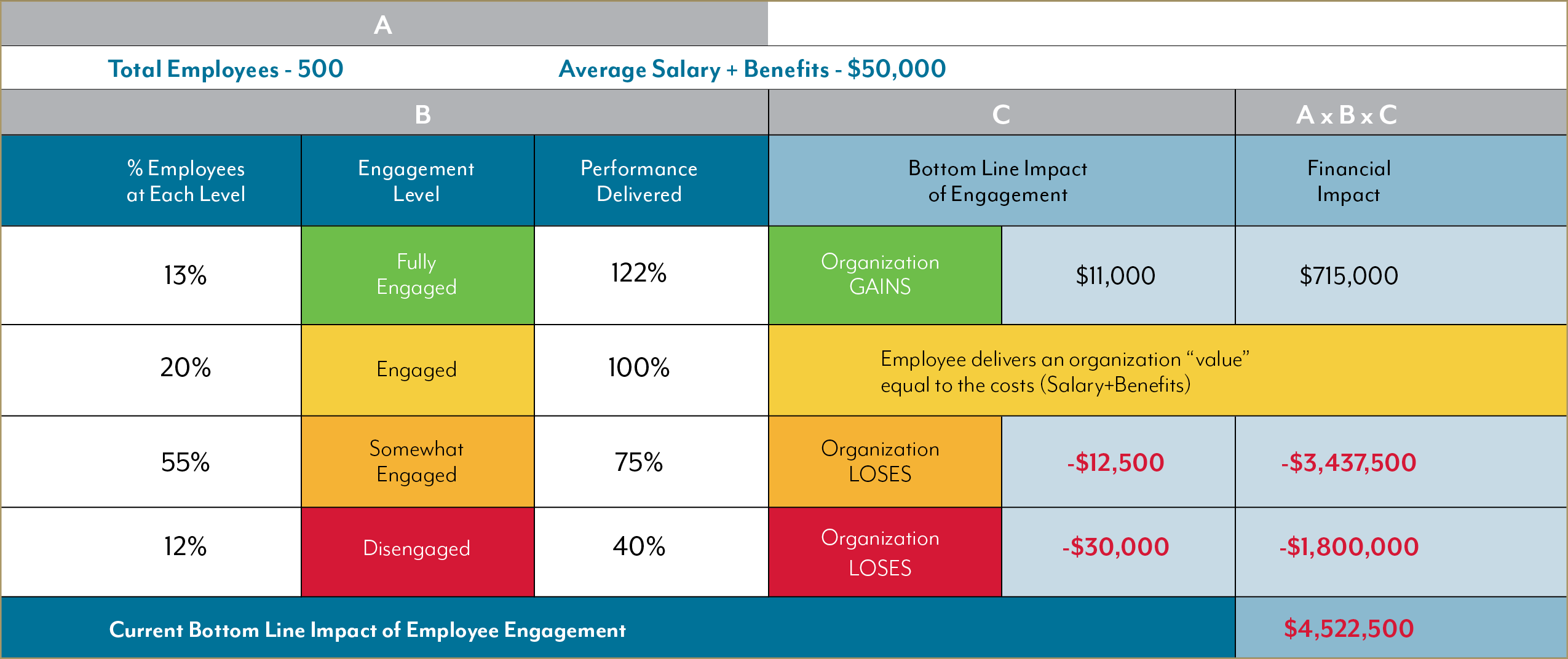
What happens when we move the needle?
Now, let’s see what happens when we move the needle by a relatively small amount. It’s important to note that there are two metrics we can improve here.
-
We can improve the percentage of employees within each engagement level.
-
We can improve the performance each engagement level delivers.
Improving employee engagement levels
For this next calculation, let’s assume that 10% of each engagement level improves by just one rung in the engagement ladder. This means that 10% of employees who were previously classified as “somewhat engaged” are now in the “engaged” camp. Employees originally classified as “fully engaged” remain so, as there isn’t a higher level of engagement for them to obtain.
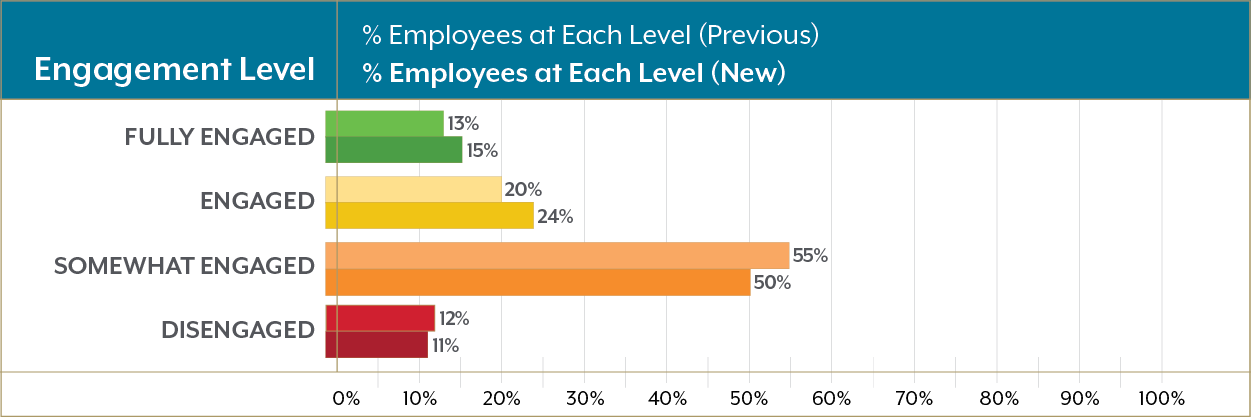
Improving actual performance delivered
To keep things simple, let’s increase performance delivered by around 10% as well. This means that where engaged workers were once delivering 100% of their compensation, they are now delivering 110%.

Putting it all together
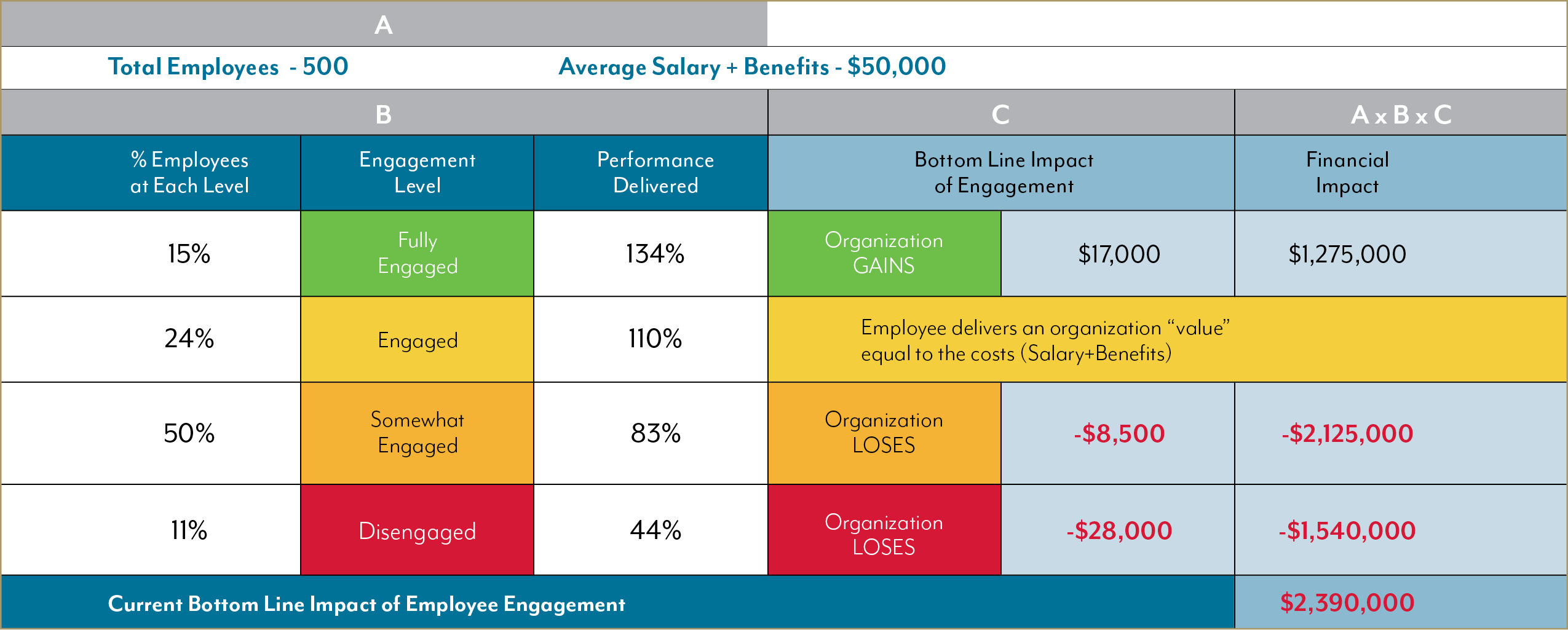
By improving each of these metrics slightly, Sprockets Electric Company experiences a huge improvement in productivity. Net result: the company saved more than $2 million.
Does the company have more work to do? Absolutely, yet this is a tremendous improvement from their original position. Keep in mind, productivity is just one of the many metrics that improve alongside increased employee engagement.
Would you like to discover other ways employee engagement can help boost a company’s bottom line? Maybe you have a question you think we can help answer or you’d like to learn more about our calculations? If so, please contact us.
We’ve been in the employee engagement, recognition, and safety industry for nearly a century, and we’d love to show you how we can help your organization become more productive!
C.A. Short Company partners with companies to manage, drive and facilitate increased employee engagement to increase financial performance, productivity, quality, and core performance outcomes. Our process and research-based platform enables executives and managers to engage their teams to increase the bottom line, motivate staff, and incentivize positive behavior. To Request a Complimentary Consultation, click here.
